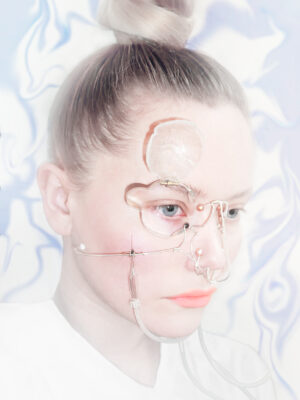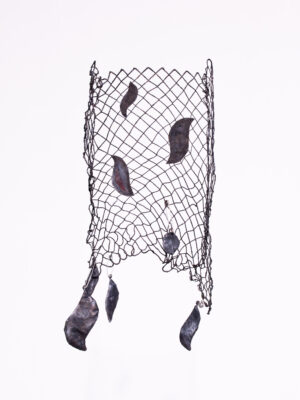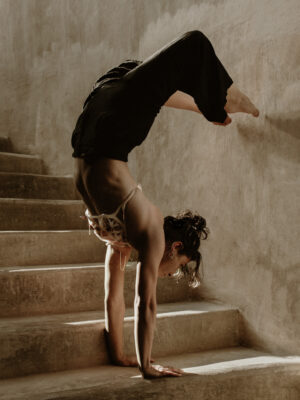One good thing about social media is to constantly being able to see new works of recent graduates and emerging artists. I saw Judit Fritz’s work on her Instagram page, and it captured my attention immediately. I visited her website, — and the more I saw, the more interested I became in her work. I felt fortunate to have the chance to talk with her about her graduation work, the creative/scientific work behind the exhibited pieces and future plans.

Vica Gábor: You are a recent graduate of Konstfack University of Arts, Craft and Design. Can you tell us about your experience of those years spent in the University?
Judith Fritz: I had my bachelor graduation at Konstfack in June 2021, but I will continue my Masters at the same institution from September. This school really suits my needs, and I also live next door to it, so it is a true luxury. I can only speak warmly about Konstfack.
Within every course, they gave us so much freedom to explore whatever we wanted to. The focus is always on personal development rather than fitting the norm.
For instance, I often presented completely broken results because I always got curious about what would happen if I took techniques to the extreme. But the focus was never on having the prettiest finish. It was to explore.
We are explorers and developers of the term. Almost every evolutionary stage of the human being can be directed back into the evolvement of these genres, which is why, in the end, I see these art forms as tools to study human behaviour.
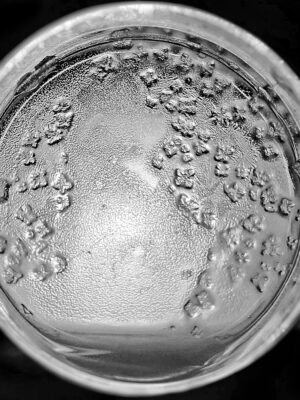
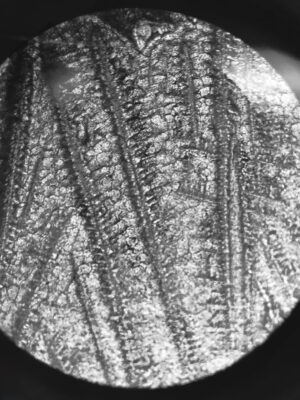
VG: Your final work is complex and shows interest in different fields, like literature and science. What are your previous studies, and how do they affect your creative process?
JF: I studied geology, literature, art history and some design history. My main interests are within the field of science and history. Art is a translational tool for me to talk about scientific subjects in a more understandable way. At my final year at Konstfack I had some assistance from a lab, which provided me both with intriguing discussions and equipment. With the knowledge, they provided me with and a year worth of research, I created crystals from the salt extracted from human tears and sweat. Basically, this facial piece is an interpretation of the process of creating these crystals, with inspiration drawn from ancient alchemical tools and machines. It is a discussion piece on how to talk about human connections through objects.
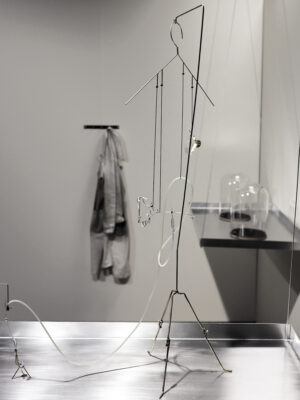
VG: The connection you are talking about is the connection between human beings or between humans and nature?
JF: The main topic I work with is about this connection between humans and nature. So, in that sense, all of my works relate to one another. I am interested in how we are all in this cycle of being and disappearing and returning. How the system of life functions is the main subject I work with, and it relates to the place, this island of Gotland, where I grew up. It is such a dramatic place, and it is impossible not to see one’s part of the cycle of nature. The island is wholly made of limestone, so it is full of fossils; the cycles are vividly pointed out here, so the place evoked my interest in science, nature and poetry.
VG: How does it feel to be away from such a dramatic natural place as your home island?
JF: Well, I miss home a lot. Not having the ocean all around me, I feel it is hard to breathe sometimes. But the thing with islands is that you never feel as free as when the ocean surrounds you, but you are never as trapped as you are on an island. It is a duplicity that I can see that I deal with in my artistry—trying to feel grounded in the vast and overwhelming—trying to undress the human costume. I think I am constantly trying to find a home. Maybe not in a geographical sense, but a universal, an origin that goes beyond human-created templates.
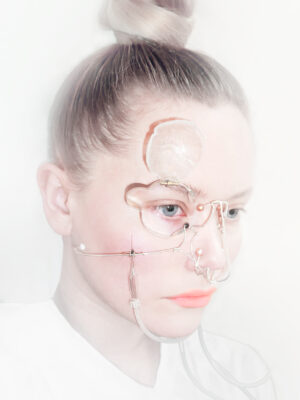
VG: Let’s talk about your graduation exhibition. Could you explain what do we see, what are the exhibited objects?
JF:
VG: Why is it important for you to show the whole process of the crystallisation?
JF: With microscope images, you get such a zoom in on the texture that you can very well see how it changed throughout the process. You can also see how the result differed depending on variables such as light, silence, physical disturbance etc. It was essential to include the process together with the final work because the whole theme was about the transition of matter – how matter moves and how we are very much connected to what we see as objects.
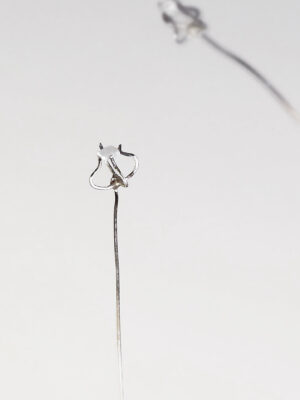
VG: Can you tell me more about your experience how was it to work on an art project in a lab? Are you generally attracted to art that has a connection with science?
JF: I would say it is the most interesting collaboration I have had. To meet such passionate individuals is rare. And I genuinely feel like they appreciated hearing about their field from an artist’s point of view. We had many things in common but came from different angles.
When they visited my exam show, one of them said that it was so valuable and fun for them to see an end result being substantial and placed in a context, as the scientists work often ends up being data and written words. This is really what I was reaching for – art and science getting back together as discoverers of each other.
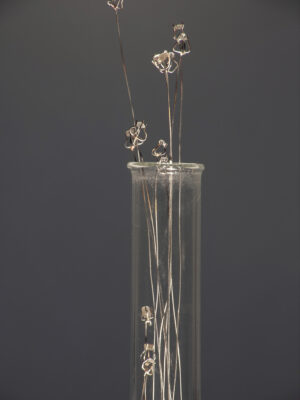
VG: Your piece talks about the transition of matter. Also, you use the title in one of your works: ‘The human body as a vessel of transportation.’ How did you become interested in this topic, and what is it really about?
JF: I started my first experiments in 2018 during one of my first courses at Konstfack. During this course, we randomly picked a subject, and I chose water. The process evolved into working with water as a transportation system. As a geology enthusiast, I have good knowledge about the role of water when it comes to shaping the body of the planet. I wanted to connect the human body to the same systems. In a way, this objectifies the human, but it also subjectifies
nature. Or, more accurately – it shows that both of these angles are present in what we usually divide into being only one or the other. In my early experiments, I investigated what water carries into our bodies and out from our bodies. This is the early project which I called ‘The human body as a vessel of transportation. This work led me to work with salt. As the course was concise, I could not really experiment in-depth, but I knew I would return to it, and later this became the theme of my final year work. It is really about connection and movement. How nothing can ever be defined through a template because it has already evolved into something else. I come to think of when I applied to Konstfack. First, I struggled with this pretentious description of where I see myself as an artist in the future. I realised it was just what I thought I should write and just said fuck it, threw it away and started to write about how I am a coral. “The coral me”, I think I called it. In a way, I can see how this formulation was the start of everything I have investigated since.
VG: So this subject-object relation is about seeing the transformation or grasping this similarity/oneness between everything?
JF: This whole project is really about the subject-object relation. How to see yourself in other things that you disconnect yourself from but actually have this close relationship to. So, my work has had many philosophical turns, but my most important inspiration is poetry – how to translate the sublime into something understandable, or at least graspable. Sometimes that is not possible, which is why I also allow myself to freely involve imaginary outcomes as well. I think Imagination is the basics in all knowledge to come.
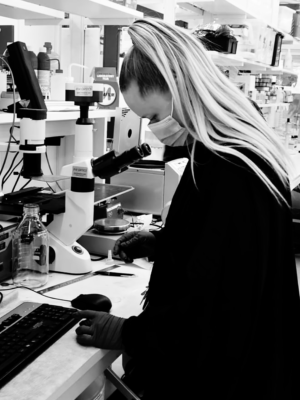
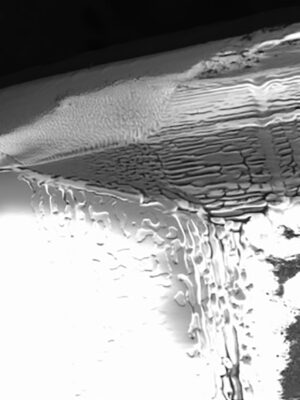
VG: I think this is a complex work that can be understood in different layers. How do people react? Has the dialogue you hoped for started?
JF: A lot of people wonder about the human side of it. The humans behind the tears – are they sad or happy tears? How did I collect them, and from who? This is such an exciting subject, but I chose to keep it a secret because I really wanted people to start asking questions about this project. Maybe not to me specifically, but to themselves. I wanted to create a discussion. If I were exposed to the history of the tears from the beginning, it would be too directed towards the emotions and the individuals. For me, it was more about objectively connecting emotions to the numb. The sorrow, the joy and the persons are always out there in the many chains of events that takes place in nature if one chooses to see it that way. And it’s something that connects all of us; it’s not about a specific person.
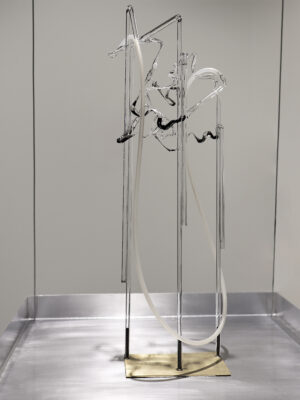
VG: What is this connection? Why is this interesting for you?
JF: When something, anything really from the human body, starts to accumulate and get together,
you can actually begin to see it; it becomes something else. And at the same time, it becomes clear that you can see yourself being something else. Something un-subjective, if you know how I mean? When I let the substances get together and create a shape or a form, an
emotional tie to what you usually just wipe away from your cheek begins to grow. When you can see it accumulate like this, you realise that there is no difference between your tears and the sea salt you have on your food. It brings up questions about what we really are, what we have been and will be. I think this is very beautiful. I ask myself in my thesis work, “How much of the ocean have I filtered while in tears?” It is a central question for my work.
VG: What will you be working on, what will be your theme during your Master?
JF: The more secretive part of my graduation project is something that I applied to the Masters with and will go deeper into during those two years. It will be sort of an extension of Electrolyte but with more focus on the persons behind the materials, or to put it like this – if Electrolyte was about finding a connection point, my coming masters work will be about actually connecting.
VG: Is poetry solely part of your inspiration, or does it appear when you show your work within the installation?
JF: I think it is part of both how I create and how I present my work. But important here is also to know that I use the word “poetry” widely. It is not just about the written. It is about what moves you, and that can be expressed through craft as well. The facial piece actually does work, but many of the details are more imaginative and poetically chosen – placed to precisely point out important anatomical places. The pearls for instance, are placed where the tear duct channels would need to be closed off to force all the tears down one’s cheek and into the tear collector. I wanted to include pearls as a way of portraying the ocean soaking the water back. It is also a wink to the history of alchemy, where one believed that objects possessed powers if used correctly. Poetry can be so much, and for me, it’s not essential if my work actually works. It is more about how to portray the idea of it. I also do work a lot with words. That is why I think both my essay and the presentation movie I made for my exam are important to build context in this work. I care for the rhythm of the written poetry, but I also like seeing the poetry of things.
